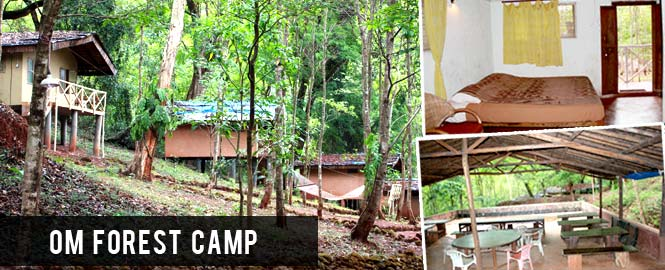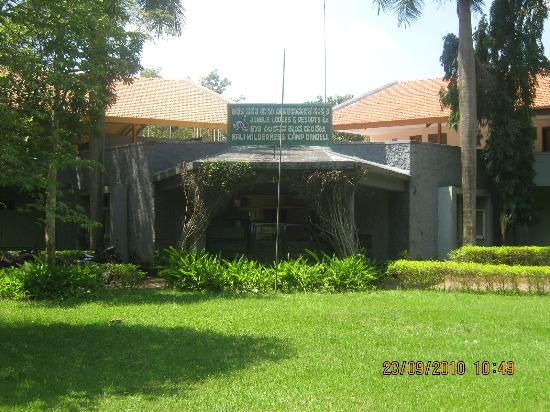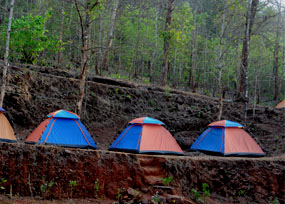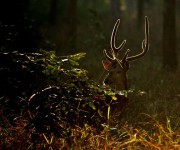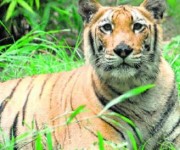Location: Madhya Pradesh
Height: 600-900 m above sea level
Area: 1,945 sq. km
Established: 1 June 1955
Recommended Season: March to mid-June & November to February
Situated in the Indian state of Madhya Pradesh, the picturesque Kanha National Park was the inspiration behind Rudyard Kipling's unforgettable classic Jungle Book. The romance of the Kanha National Park has not reduced over time-it is still as beautiful.
If one were to point to the middle of India, chances are he will pick out the forests of the Banjar and the Halon valley, the two forming the western and eastern halves of the Kanha Tiger Reserve, which have long been famous for their wide diversity of wildlife.
The park was created in 1955 by a special law and, since then, it has dedicated itself in preserving a variety of animal species. Many endangered species have indeed been saved here. Today Kanha is among the few most scenic and beautiful wildlife reserves in Asia. This 'Tiger Country' is the ideal home for both predator and prey.
By far the most striking features of this region are the open grassy meadows, where sighting blackbuck, swamp deer, sambhar and chital is common. And, if one can transcend into time, a barefooted Mowgli would perhaps come padding along the dusty trail, for this is the land of Kipling's Jungle Book.
How many of you have seen a tiger before? Most of the answers will be ambiguous because everyone wants to see a tiger. Then where can one spot TIGER? Well, even if there are circuses and zoo's all over India, there's some kind of a thrill you experiences when all of a sudden you came across a TIGER roaming freely in the wilderness of its natural habitat: the fields and forests of India. There are numerous Tiger reserves in India, that are preserving this ferocious beast, but nowhere can you see them as often, and as regularly as in Kanha National Park.
Located in the Mandla district of Madhya Pradesh, Kanha national park cum Tiger reserve extends over an area of over 1,940-sq-kms. The major feature of this region's interesting topography is the horseshoe shape valley and the whole park area is surrounded by the spurs of the Mekal. The Surpan River meanders through Kanha's central Maidans, grasslands that cover the extensive plateau. Steep rocky escrapments along the edges offer breath-taking views of the valley.
Major Wildlife Attractions of Kanha
The main wildlife attractions in the park are tiger, bison, gaur, sambhar, chital, more pictures.... barasingha, barking deer, black deer, black buck, chousingha, nilgai, mouse deer, sloth bear, jackal fox, porcupine, hyena, jungle cat, python, pea fowl, hare, monkey, mongoose, tiger, and leopard.
The birds species in the park include storks, teals, pintails, pond herons, egrets, peacock, pea fowl, jungle fowl, spur fowl, partridges, quails, ring doves, spotted parakeets, green pigeons, rock pigeons, cuckoos, papihas, rollers, bee-eater, hoopoes, drongos, warblers, kingfishers, woodpeckers, finches, orioles, owls, and fly catchers.
However, if one animal species were to represent Kanha, it would probably be the barasingha, or the swamp deer. The barasinghas at Kanha are unique, being the hard ground variety, which populate the large open tracts of grass amidst the forests of teak and bamboo. Twenty years ago, the barasingha was faced with extinction but some desperate measures including the fencing-off of some animals helped save them and again the air in Kanha bugle with their rutting calls.
The open meadows during the cold winter months are usually teeming with barasinghas and there is plenty of tiger activity around the fringes. A female with two small cubs would circle around at least two or three times during the day and the swamp deer would go berserk, their husky alarm calls ringing through the jungle. Far from being the cunning, smart aleck, portrayed in Disney's adaptation of the Jungle Book, the real "Sher Khan" is true blue-blooded royalty.
There is a museum at Kanha depicting attributes and activities of the park and tribal culture. It is closed every Wednesday.
Guided Visits
Forest Department guides accompany visitors around the park on mapped-out circuits which enable viewers to see a good cross-section of Kanha's wildlife. The best areas are the meadows around Kanha, where blackbuck, chital and barasingha can be seen throughout the day
Bamni Dadar
Known as Sunset Point, this is one of the most beautiful areas of the park, from where a spectacular sunset can be watched. The dense luxuriance of Kanha's forests can be seen from here. Animals that can be sighted around this point are typical of the mixed forest zone: sambar, barking deer, gaur and four-horned antelope.
Wildlife (Mammalian Species)
Kanha has some 22 species of mammals. Those most easily spotted are the Striped Palm Squirrel, Common Langur, Jackal, Wild Pig, Chital or Spotted Deer, Barasingha or Swamp Deer, Sambar and Black Buck.
Wildlife (Mammalian Species)
Kanha has some 22 species of mammals. Those most easily spotted are the Striped Palm Squirrel, Common Langur, Jackal, Wild Pig, Chital or Spotted Deer, Barasingha or Swamp Deer, Sambar and Black Buck.
By Air: Nearest Airport: Jabalpur Airport which is about 156 km, By Rail: Nearest Railway Station: Jabalpur and Bilaspur Railway Station which is about 156 km, By Road: Daily bus service available for Kisli and Mukki from Jabalpur and back. Taxis are avai

